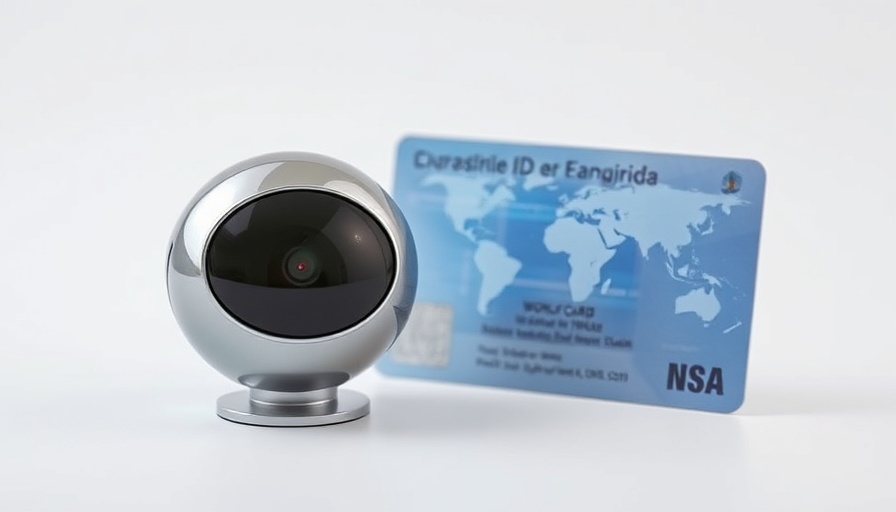
World's Bold Move: Partnering with Tinder and Visa
In a significant shift towards enhancing digital identity verification, World, the biometric ID company acclaimed for its innovative eyeball-scanning technology, has announced strategic partnerships with prominent players such as Tinder and Visa. This collaboration aims to broaden the reach of its identity verification system and facilitate seamless sign-ups across various platforms. The implications of these partnerships could be transformative, marrying the complexities of biometric technology with the simplicity of user experience in popular apps and transactional environments.
Why This Matters: A Leap into Mainstream Technologies
World aims to make identity verification more accessible and trustworthy. By providing Tinder users in Japan the ability to verify their identities easily, they are expanding their user base to include individuals who might be hesitant about traditional biometric scanning methods. The collaboration not only provides users with an additional layer of security but also demonstrates a shift in how we view and handle personal data privacy in the digital age. As more platforms embrace technologies that necessitate the verification of human identity, concerns over privacy and data misuse are expected to emerge.
The World Card: Spending Digital Assets, Reimagined
Perhaps the most intriguing aspect of World’s new ventures is The World Card, initially set to launch in the U.S. later this year. This innovative card will enable users to spend their digital assets anywhere Visa is accepted, automatically converting cryptocurrencies into fiat currencies as needed. This feature not only simplifies consumer transactions but also introduces potential rewards for utilizing AI-driven services, making it more attractive to tech-savvy consumers looking for flexibility in their financial dealings.
Embracing New Financial Narratives: The Role of Partnerships
The partnerships extend beyond Tinder and Visa; World is also teaming up with Kalshi, a prediction market startup, and Morpho, a decentralized lending platform. These collaborations allow individuals to utilize their verified IDs to sign into these services seamlessly. As decentralized finance (DeFi) continues to grow, having a biometric verification system in place can enhance trust and security, addressing a primary concern for users in the evolving digital landscape.
Understanding Privacy: A Double-Edged Sword
While advances in biometric technology promise enhanced security and convenience, they also raise questions regarding data privacy and ethical use. Critics argue that the adoption of such measures could lead to potential misuse of personal data, especially in a landscape where breaches are becoming all too common. Thus, maintaining transparency about how data is collected, stored, and utilized will be crucial in gaining public trust.
Social Implications: What It Means for Users
This push towards biometric IDs also emphasizes the need for social awareness regarding personal identity online. As individuals increasingly conduct their lives virtually, from dating to financial management, they must navigate the risks associated with sharing their identities. World’s initiatives strive to protect users’ rights while ensuring that the technology meets those demands effectively.
Looking Ahead: The Future of Identity Verification
The integration of biometric systems into everyday applications points to a future where identity verification becomes indistinguishable from typical online activities. With partnerships strengthening the infrastructure of businesses like Tinder and Kalshi, and the introduction of The World Card facilitating smoother financial transactions, World is positioning itself at the forefront of a potentially revolutionary shift in how we authenticate our identities online.
In conclusion, as digital identities evolve, so will the tools and technologies that support them. For individuals and businesses alike, these advances present both opportunities and challenges that will require careful consideration and proactive engagement to harness their full potential.
Take Charge of Your Digital Identity Today!
As we navigate the complex landscape of digital identity and technological advancements, staying informed is key. Embrace the conversation around biometric technology and identity verification, and be proactive in understanding how these changes might impact your privacy and security. Engage with platforms that prioritize your interests and explore the evolving tech landscape.
 Add Row
Add Row  Add
Add 




Write A Comment